The Rebellion of Kawaii Culture
by Kay Mashiach
List of terms:
Kawaii - cute
Kimo kawaii - cuteness that gives you the creeps
Busu kawaii - cute even though yucky and homely
Shojo - young girl
Otaku - a young person obsessed with computers or particular aspects of popular culture to the detriment of their social skills
Amae - relationship type describing the need to be in good favor with, and be able to depend on, the people around oneself
Barriko - fake children
Moga - modern girl
Fanshi guzzu - fancy goods
Sekinin - responsibilities
Fuwafuwa - fluffy fluffy
Otome - maiden woman
Chizimu shiko - orientation towards miniatures
Kogal - Japanese fashion, schoolgirls wearing an outfit based on their uniforms but with very short skirts
Lolita - Japanese fashion, most popular kawaii fashion, characterized by a western history and historical costume
Ganguro - Japanese fashion, includes brightly colored outfits, mini-skirts, and tie dyed sarongs
Decora - Japanese fashion, outfits including black with bright pink shirts worn with tutus and legwarmers, and layers of cute accessories
Mori girl - Japanese fashion, with mori meaning forest, this fashion uses flowy outfits using natural fabrics and a light and neutral color scheme
Kimono style - Japanese fashion, maintaining tradtional fashion forms, this style mixes kimono with modern and stylized clothing
ARCH 316 AALU 2018
In Japanese the word for cute is kawaii, which defines and represents much of the culture experienced in Japan. Everything from the little coin purses at MiniSO to useless but desirable toys obtained from the endless coin machines in the streets of Kobe, and from Lolita school girl outfits reminiscent of little kids worn by teenagers to the baby pink painted interior at Kansai International Airport—all of it can be characterized as cute. This research paper is about a journey through kawaii Japan, recognizing the aspects of cute in fashion, anime and manga, toys, and ideas.
In order to explore kawaii Japan, I needed to define what kawaii meant to me. Beginning the trip, the term was purely defined as cute, but as time passed it began to mean more than the simple English term which only brushes the surface of being an objective characteristic to define something or someone. Kawaii derived from a term that meant embarrassed, shy, pathetic, and vulnerable. As time passed, the term shaped into what it is known as today, which describes innocence, infantility, obedience, and adorable and has also become a mode of description for small and attractive things. Kawaii is a deeper description than just cute and its overall social impact has led to a constantly reinforced stigma and expectation about what women, men, fashion, trends, etc. should be – being somewhat dream-like or even shallow. The baseline for the term kawaii is very similar amongst those analyzing it. According to Hiroshi Nittono, the meaning of the term kawaii “combines both a biological basis and cultural determinants”. Laura Miller writes that “although literally the word kawaii means ‘cute’ it has a much broader semantic meaning than does the corresponding English term,” elaborating that “kawaii simply means something like groovy, cool, nice, or interesting”. Thorsten Botz-Bornstein refers to kawaii as meaning “’cute’ in Japanese, and denotes a common popular culture closely linked to the aesthetic expressions of kitsch”. Sharon Kinsella, one of the most heavily referenced authors when it comes to kawaii aesthetics has multiple definitions for the term including the simpler definition that most people who do not know its true depth believe it to be: “’cute’ essentially means childlike; it celebrates
sweet, adorable, innocent, pure, simple, genuine, gentle, vulnerable, weak, and inexperienced social behavior and aesthetics”. These attitudes that have become ingrained in Japanese society.
Kawaii includes not just all things cute, but also ingrained in the term is cool. Kawaii defines a culture with a greater intellectual significance in which the Japanese have actually been trying to promote internationally. A foreign policy titled “Japan’s Gross National Cool” or “Cool Japan” was initiated by the Japanese Ministry of Foreign Affairs as a method to distribute pop culture around the world despite the economic and political problems from the “lost decade”. It has become a way of characterizing the ideal Japanese man as an otaku (a young person obsessed with computers or a particular aspect of pop culture to the detriment of their social skills) and the woman as fitting into a “narrow model of cute femininity” (Miller, 2011). However, kawaii culture has also become a form of rebellion for the shojo, or the leaders of cute, that used kawaii fashion as a way to escape sekinin (responsibilities) and the depressing adulthood of Japanese society for women. Embodying cute allows women to remain in a childhood state, one void of maturity and independence, prolonging the times of otome (maidenhood). Kawaii tends to get modified and inflated throughout the Japanese world to maintain a persona of what is Japanese culture. The production and consumption of all things cute becomes a complex societal characteristic that manifests itself from the smallest of situations all the way to international representation.
Introduction
Fashion and the shojo
It became apparent while walking around the packed alleyways of Shibuya or the fashion boulevards in Omotesando – there was an underlying and very common trend in all the outfits worn on the streets. Every outfit filling the streets was in one way or the other, kawaii. Oddly, they were all so individually unique. Some women wore bright neon colors and others wore pastels. There were women with baggy and oversized clothing giving the appearance that they were tiny, adorable creatures, women wearing ruffled skirts with frilly and doll-like blouses, and women in boyish, almost androgynous looking dresses.
Kawaii fashion encompasses almost all trends worn by Japanese youth on the streets. Cute clothes in Japan are designed to make women specifically look childlike and infantile, enhancing the young characteristics of a woman. The trend somewhat memorializes childhood and seeks to set up an image of purity without seeming like it is an intentional move to cover up reality and adulthood. Therefore, the original goal of fashion in kawaii culture is to create an image that looks genuine, but also demure, innocent, and youthful. In the 1980s, fuwafuwa (something fluffy and bouncy), pastel colors, frills, and ribbons was the
absolute definition of a kawaii outfit. As time went on and kawaii culture became a form of rebellion against adulthood and responsibility, the style began to fork off and take shape in a variety of ways. Today, we see styles such as the kogal (schoolgirl), the Lolita, ganguro, decora, mori girl, and kimono style. These fashions rely in an innocence or childish quality, and the women become barriko (fake children) (Kinsella, 1995). Furthermore, “otome and shojo are the backbone concepts that drive this personal sense of kawaii, while its incarnation as Lolita provides a site for a lived practice and performance in which happiness is built through feelings, affects and states of becoming” (Nguyen, 2016). Although they are seen commonly in everyday fashion and streetwear, they evoke a costume-like appearance because of its parallel with role playing and dress up. Kawaii fashion loans people personalities and lifestyles they wouldn’t otherwise be able to attain in their normal lives. Because it is an act of dressing up, “Japanese cool and cute are not grounded in any particular street culture or girl’s subculture, of which there are several, but rather are wildly mashed-up aesthetics from the worlds of fashion, mass market product design, and popular media” (Miller, 2011).
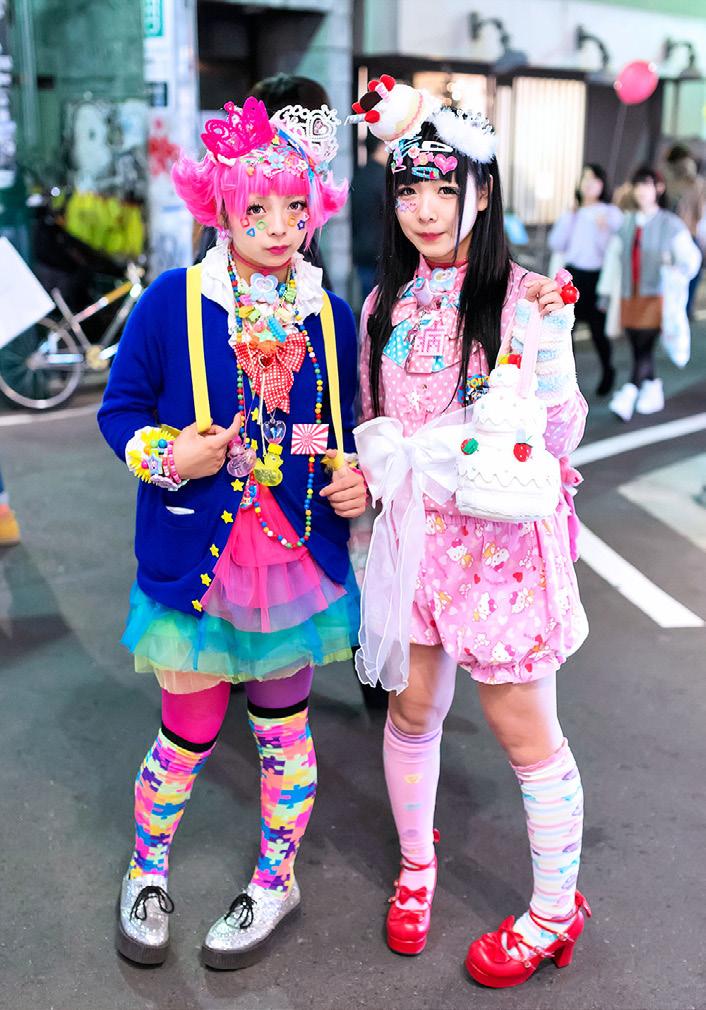

 The Lolita, Japanese street wear. Kimono style, Japanese street wear. Decora, Japanese street wear.
The Lolita, Japanese street wear. Kimono style, Japanese street wear. Decora, Japanese street wear.
Fashion and the shojo
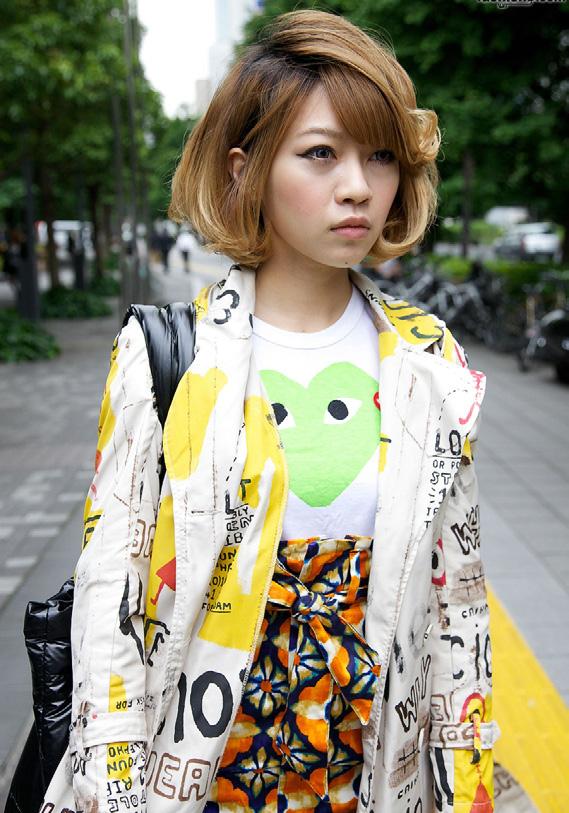
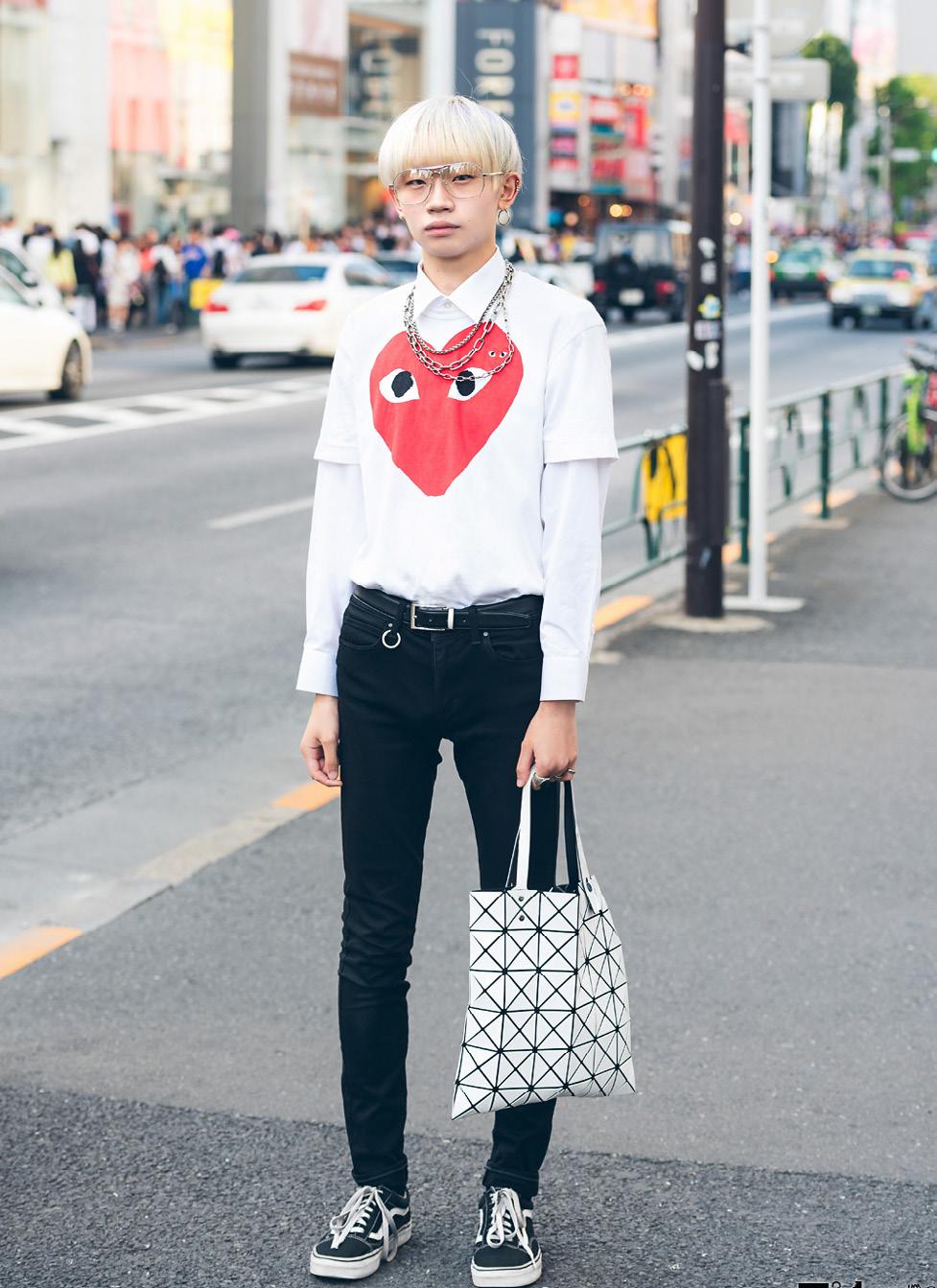
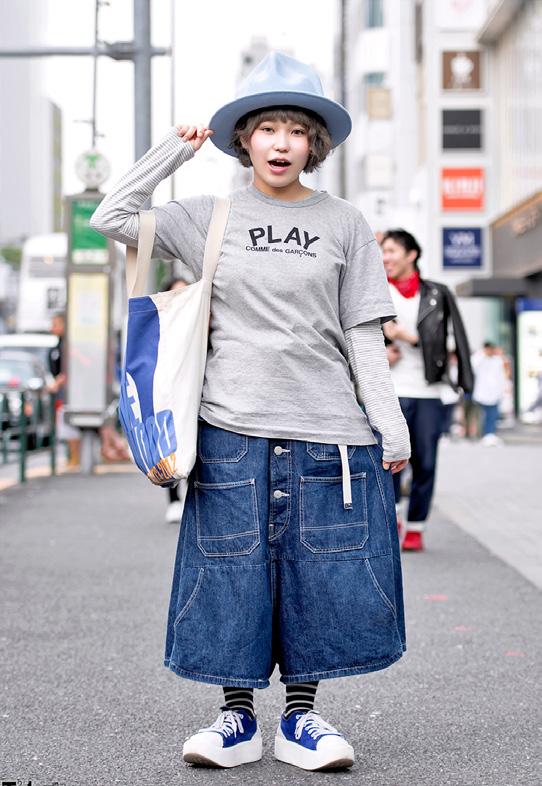
famous lines PLAY and representing cute little heartshaped things with eyes as the logo. Kawaii enables a rejection of the ephemerality of childhood, instead immortalizing it. Its fashion is highly representative of its overall social purpose, aiding in the willfulness to be detached from reality, adulthood, and traditional Japanese society. The shojo seen in kawaii culture use fashion as a method of expression of their underlying resentment of women’s role in post-youth society which removes much trace of individualism and freedom.
Aya Gloomy is a representation of the rebellion that is manifested in kawaii culture in Japan. On top of looking cute in her tye dye outfit that she created and green hair, Gloomy embodies the shojo by acting looking pure and sincere but also having a somewhat defiant persona.
In Western culture, it is common to see women rebelling in the form of sexual expression, wearing provocative clothes and reveling in the freedom of sensuality; however, in kawaii culture, women rebel in the form of play, or not growing up, and remaining in a state of falsehood and hallucination. Even worldwide Japanese fashion brands like Comme des Garcons partake in this idea of play by naming one of their most
 Musician, Aya Gloomy, at an underground techno in Tokyo, Japan. Photograph by Francisco Burneo.
Japanese street wear, Comme des Carcons PLAY line. Images courtesy of tokyofashion.com
Musician, Aya Gloomy, at an underground techno in Tokyo, Japan. Photograph by Francisco Burneo.
Japanese street wear, Comme des Carcons PLAY line. Images courtesy of tokyofashion.com
Consumption and fanshi guzzu
Consumption in Japan is surrounded by the attractiveness and desire for futile but adorable little objects and kitschy forms of useful gadgets. In the essay Cuties in Japan, Sharon Kinsella expresses that cute is “accessible exclusively through consumption” (Kinsella, 1995). As cultured and knowledgeable as Japanese people are, the kawaii culture promotes materialism and excessive consumption because much of kawaii remains in small knick-knacks and toys. In traditional Japanese culture, personal consumption and displays of wealth are heavily looked down upon as an excessive and unnecessary part of living. Therefore, even kawaii consumption has become a part of a rebellion against the traditional social grain. Kawaii as a niche is a rebellion and a statement against reality, but keeping in touch with the real world is necessary for its survival, and there are many in the world ready to purchase kawaii toys. These toys allow people to enter a little kawaii world, removing a consumer from the awaiting evils of adulthood and responsibility, even just for a short moment. Therefore, these toys “requires only partial participation; that is, the mode of consumption is ‘occasional’, ephemeral and non-exclusive)” (Khoo, 2014).
Fanshi guzzu (fancy goods) are typically small, rounded, pastel, and soft with cartoon features and a loveable personality that is inferred by its adorable appearance. The looks of the small goods and toys disguise the true use function of the object. Many times, “this mismatch between the good’s function and its design has simply gone unnoticed; at other times an attempt has been made to camouflage and mask the dirty image of the good or service in question” (Kinsella, 1995). These toys are oddly reminiscent of low resolution animals because “baby schema, a set of physical features commonly seen in young animals, is a key stimulus to elicit the feeling of cuteness” (Ihara, Nittono, 2012). Furthermore, the toys represent things that have the “emotional lives of people (that is, objects that can cry, get hurt, or alternatively manifest happiness)” (Khoo, 2014). The phenomena in Japanese culture of chizimi shiko is described as the “orientation towards miniatures, small and touchable things” (Nittono, 2016) and is seen commonly in the consumption of toys. Miniatures
brings people back to a time in childhood of playing with toys and remaining innocent, so being able to bring back that adolescence is crucial in kawaii culture.

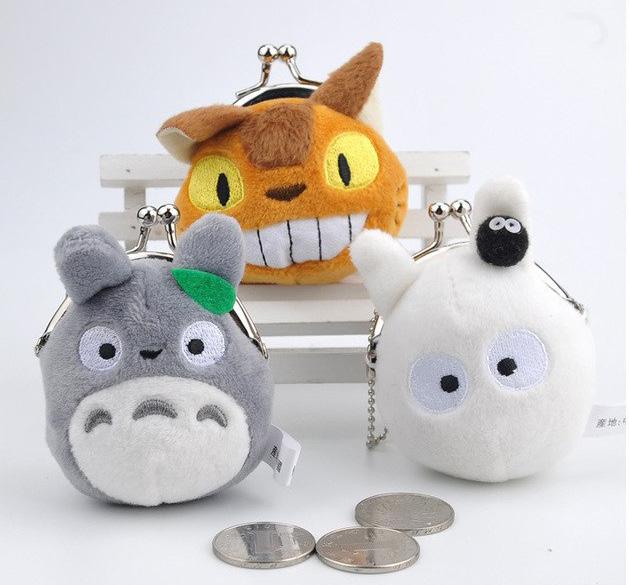
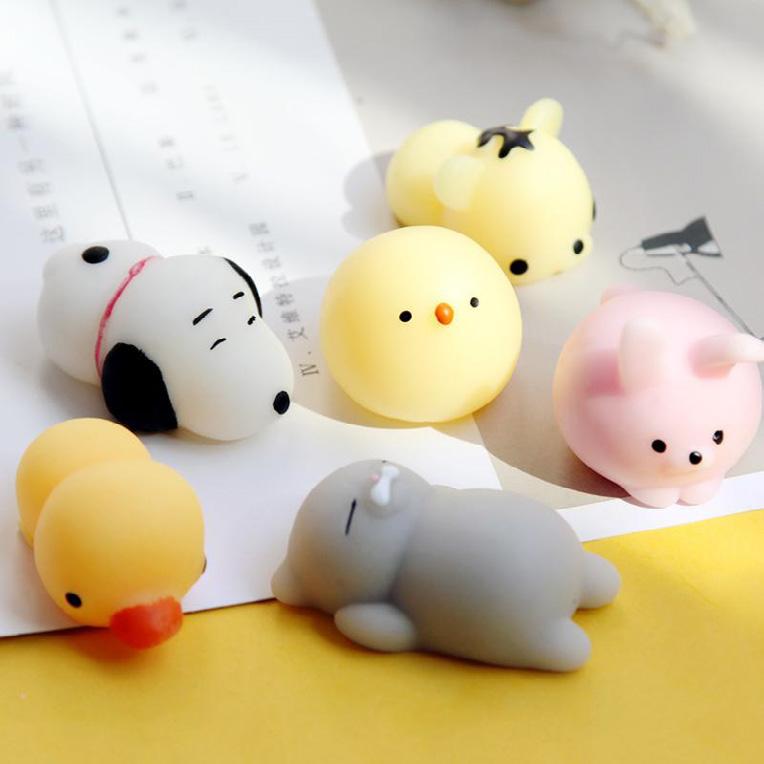
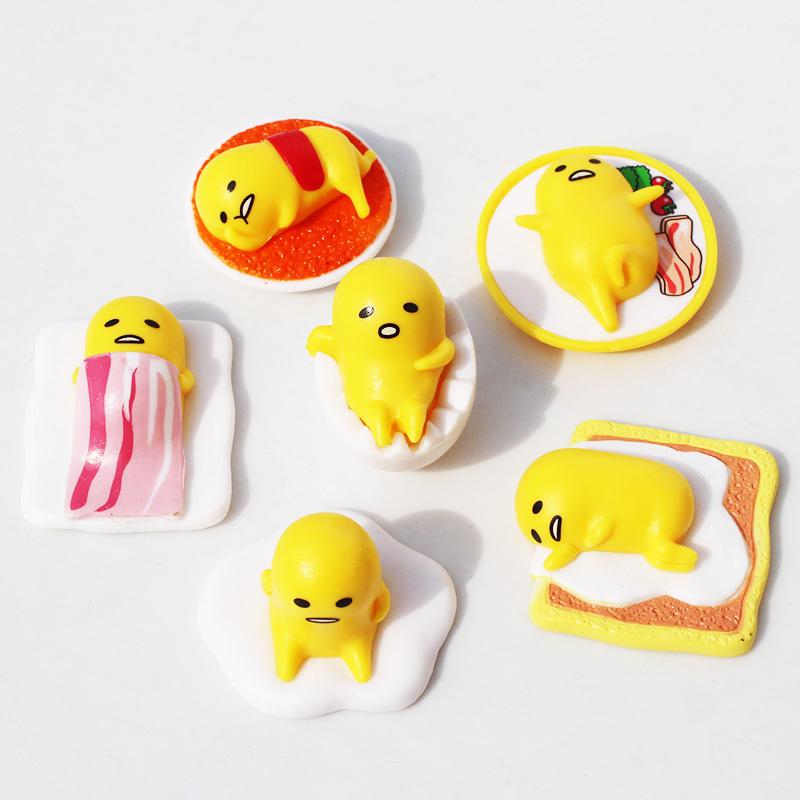 Japanese toys and kitsch.
Japanese toys and kitsch.
Innocence in thought
Kawaii culture doesn’t just remain in the physical, where fashion and toys lie, but it also influences social ideas, mentalities, and relationships. Because it has become a form of rebellion for the young, and especially the shojo of Japanese society, the notions of kawaii are much larger and deeper than something looking cute. Being kawaii refers to a fight against the stereotypical, grown up, and obedient woman whose whole life after marriage revolves around her husband and children with little room for independence. By acting in a saccharine way, it is a response to growing up and having responsibilities, allowing women to act young and childish for as long as possible. Acting according to kawaii culture meant “behaving childlike – which involved an act of self-mutilation, posing with pigeon toes, pulling wideeyed innocent expressions, dieting, acting stupid, and essentially denying the existence of the wealth of insights, feelings, and humor that maturity brings with it.” (Kinsella, 1995). Prolonging childhood by acting in an infantile way not only maintains the social behavior of kawaii, but produces a controversial community that is unique to Japan.
The mentality of those existing in the kawaii sphere encompasses a dream-like and surreal state of mind. It encourages the act of disguise, whether through wearing a costume-like outfit, masking reality in a small little toy, or acting in a childish manner. The idea is that kawaii mentality exists in an “escapist cultural experience in which culture appears less than ever as a real world” (Botz-Bornstein, 2008). Kawaii culture “idolizes the pre-social” (Kinsella, 1995) as a tactic to escape from the adulthood experience and move towards an unrealistic way of life that encompasses all things child-like.
Relationships are influenced by kawaii culture in its behavioral effects and one-on-one interactions. A relationship type specific to Japan, called amae, calls for all relationships to strive to be like that of a parent and child. This ideal relationship stems on the idea of kawaii and wanting to remain in the childhood sphere – the relationship is described as able to depend on the people around oneself and accepting inappropriate behavior and indulgence. The thought is that children don’t know any better, so being easily
forgiven for acting out or being impolite is common in a relationship between a parent and child. This type of forgiveness is transferred to the relationship of amae. This is a manifestation of baby schema in the form of a relationship. Recognizing the backbone of the relationship type, a prominent structure of amae “is so important for the formation of the aesthetics of kawaii” (Bortz-Bornstein, 2008). Kawaii culture encourages reminiscing and reincarnating childhood times as a part of adulthood, and even to escape adulthood; therefore, amae is just another manifestation of kawaii culture but in the form of a relationship.
Kawaii culture acts as a filter of life, essentially masking all things unhappy and even realistic, and enhancing the adorable, child-like qualities of fashion, toys, relationships, and mentalities. It allows people experiencing kawaii to distract from a world of responsibility. Although I went into Japan like most people, believing kawaii culture was all about its aesthetics, creating happy things and adorable items just for the fun of it, kawaii has a much greater social purpose. Meeting the people in Japan, especially those my age, I was shocked how personable and fun they were. Seeing the women from afar, dressed kawaii, I believed they were adorable girls who didn’t have much depth to them, which was almost the point of how why they dressed up (to look innocent and unknowing). However, being able to talk to them, the kawaii rebellion became much more apparent. They had this cute-coolness about them that was revealed especially at night in the DJ bars or underground music events. When they spoke, all the girls were so knowledgeable about the social and political sphere as well as the role they played in it.
Kawaii as a form of rebellion is quite subtle, which speaks to a lot of Japanese culture. In a sense, it is respectful of everyday life, but at the same time attempts to be loud in its take over of Japanese culture. Today, most of what people see in Japan is either traditional or kawaii. Creating an awareness of the shojo and their belief of the inevitable mundane, grown up lives is very effective. The lives of the youth have become a high contrast to the type of life that is traditionally lived in Japan: quiet and humble. Kawaii culture in its depths remains a unique part of Japanese culture whose rebellion can only be seen once all the layers of kawaii are fully presented.
Botz-Bornstein, Thorsten. “Wong Kar-wai’s Films and the Culture of the Kawaii”, Waste and Abundance: The Measure of Consumption. The Johns Hopkins University Press, 2008.
Ihara, N.; Nittono, H. “Cute things are not always infantile: A psychophysiological study on the feeling of cuteness”, International Journal of Psychophysiology. International Organization of Psychophysiology, 2012.
Khoo, Olivia. “Wong Kawaii: Pop Culture China and the Films of Wong Kar-wai”, The Journal of Popular Culture. Wiley Periodicals, Inc., 2014.
Kinsella, Sharon. “Cuties in Japan”, Women, Media, and Consumption in Japan. London: Curzon Press, 1995.
Miller, Laura. “Cute Masquerade and the Pimping of Japan”, International Journal of Japanese Sociology. Number 20, The Japan Sociological Society, 2011.
Nguyen, An. “Eternal maidens: Kawaii aesthetics and otome sensibility in Lolita fashion”, East Asian Journal of Popular Culture. Intellect Ltd Article, 2016.
Nittono, Hiroshi. “The two-layer model of ‘kawaii’: A behavioural science framework for understanding kawaii and cuteness”, East Asian Journal of Popular Culture. Osaka University, 2016.
Conclusion



 The Lolita, Japanese street wear. Kimono style, Japanese street wear. Decora, Japanese street wear.
The Lolita, Japanese street wear. Kimono style, Japanese street wear. Decora, Japanese street wear.



 Musician, Aya Gloomy, at an underground techno in Tokyo, Japan. Photograph by Francisco Burneo.
Japanese street wear, Comme des Carcons PLAY line. Images courtesy of tokyofashion.com
Musician, Aya Gloomy, at an underground techno in Tokyo, Japan. Photograph by Francisco Burneo.
Japanese street wear, Comme des Carcons PLAY line. Images courtesy of tokyofashion.com



 Japanese toys and kitsch.
Japanese toys and kitsch.